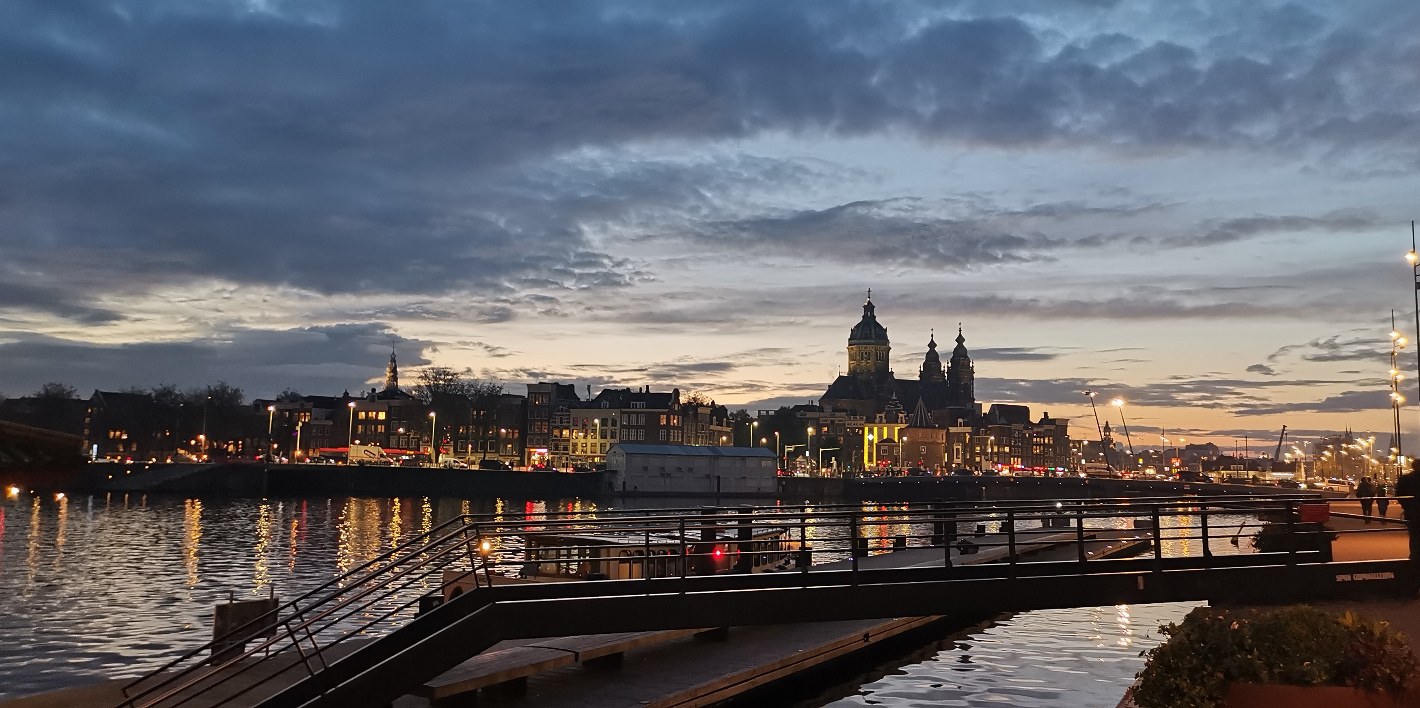
Last year I read a book on urban planning Happy city by Charles Montgomery (The Happy Urban Habitat), which answers the question 'what kind of city makes people happy' from a 'human' perspective.
I have spent the vast majority of my life in cities, from my small hometown, to Nanjing, to Shanghai, then to Shenzhen and Changzhou for a while on business trips, and now to Europe. I've come to realize that the state of my life is greatly influenced by the design of the city itself, but what is this influence? Why do I like A and not B?
All sorts of thoughts floated and sank in my head, unable to find a clue. But good thing I came across this book and gave me a chance to tell myself - what kind of city makes me happy?
Of course, some would say that the definition of 'happiness' varies from person to person, and that 'happiness' of a group is even more difficult to measure, and that urban design is not unrelated to national planning. But this article is not about philosophy or politics, it is more about sharing my views on cities from the perspective of personal experience.
What's the city?
You who are reading this and I who am writing this have spent the vast majority of our days in the city, but what is a city anyway?
After juggling definitions from Wikipedia and books, here is my definition of a city: a city is first and foremost a large human settlement where a large population is permanently clustered and where people are engaged in non-agricultural work within the geographical boundaries defined by the city manager.
Further, cities are not just places for individuals to work and play, but they also provide places where we can live our lives to the fullest, where you can be challenged and connect with people. The infrastructure of the city, the variety of business forms, the conflicts and opportunities that come with a large population allow people living in the city to choose the way they want to live with a relatively high degree of autonomy.
In such a complex system, numerous factors intertwine to shape our lifestyles, such as the amount of time spent on transportation, travel choices, distance from nature, use of third spaces, and changes in our behavior based on the strength of our anonymity.
It's hard for us as individuals to change the urban environment, we can only choose - choose a city where we can live happily.
Built for cars or built for people?
First of all, a good city, or a city that makes people happy, must be built for people.
Built for people means that urban structures and roads are not designed for cars, but according to people's needs - as a pedestrian, can I walk around the city with relative freedom, rather than needing to be parallel to vehicles all the time? Can I have the autonomy to choose how I travel, rather than 'just drive'? Is the roadside scenery a one-dimensional square concrete building, or can I enjoy old houses from the past along the way?
On this spectrum, both Shanghai and Amsterdam are on this side of the relative 'built for people' spectrum, while major cities such as Beijing and the United States are on the other side.
From my personal experience, I've been to Beijing twice in the last ten years, once in the summer and once in the winter, and although I was lucky enough not to encounter the haze on either occasion, the thing that sticks in my mind most is always the extremely wide roads. If I saw a friend across the road, it might be ten minutes before we met by a footbridge or pedestrian crossing a few hundred meters away.
It is often criticized that the same is true of American cities: if you don't have a car in the US, it's like not having legs. Many cities in the US have made the number of parking lots one of their design KPIs, leading to the result that there are over a million parking spots in the US, with an average of four spaces for every car, which means that a lot of spots that could be used for parks, playgrounds, and neighborhoods are being used for parking lots.
In contrast, the city of Shanghai is relatively more human. Tall buildings, alleyways, tenement areas, the Huangpu River - the diversity of most of Shanghai's urban landscape continues to give pedestrians a sense of freshness and the urge to walk around the city. I used to take the train to Shanghai on weekends to "walk" during my college years, and after I graduated from college, I often met up with friends to walk for hours through the streets, large and small. Maybe it was walking from Nanjing East Road to Jing'an Temple, or cycling on Xinhua Road in summer, or checking out an exhibition near Duolun Road. The visual intricacies you can pick up along the way are mesmerizing, as is the ability to choose every imaginable mode of transportation to get to any corner of the city (except for Greater Pudong), and the roads aren't so wide that it takes you half an hour to get to the other side of the street. And it's not the railings that prevent you from walking on the sidewalks, but the sycamore trees, the fruit stalls, the aunts sitting on the curb in the sun.
Amsterdam, or most Dutch cities for that matter, have made 'people (and bicycles)' even more of an aim of urban design. The complexity of the cityscape naturally goes without saying - a variety of historic buildings, stone streets, roadside cafes and terraces, bicycles of all kinds, canals and churches everywhere, and bike lanes all the way around, large blocks of no-vehicle areas, the weight of history intertwined with the lightness of youth, and without too many tourists and sky-high of prices, who wouldn't want to live here for a while? I wouldn't be surprised if, at some point in the future, Amu made the city off-limits to cars.
One tip: How do you 'check' if a city is designed for people? See if you can find a route that you can walk for an hour and not get bored; and if you can bike all the way to your destination without suddenly running out of bike lanes halfway through.
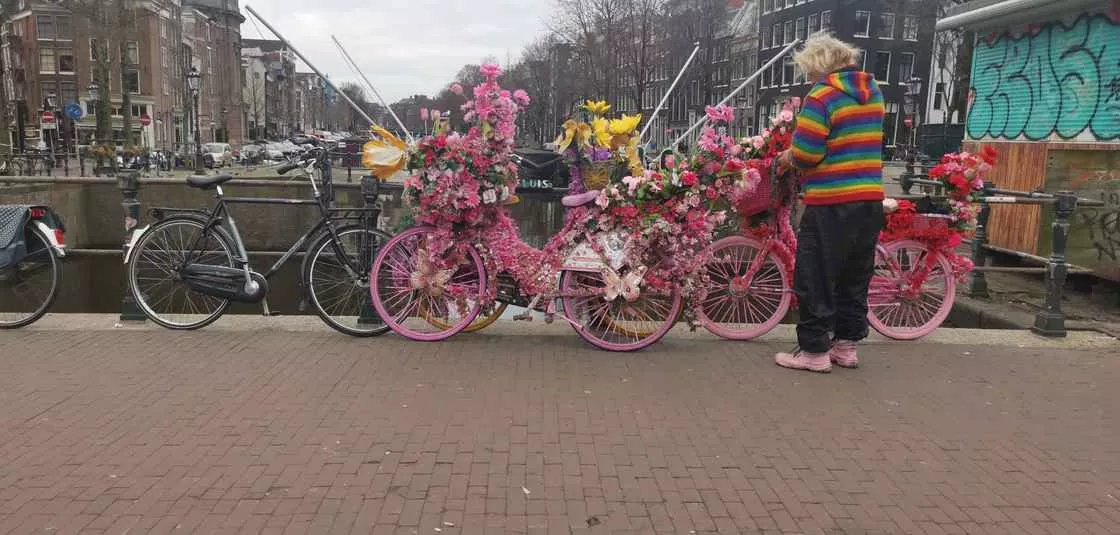
(Don't get me wrong, the bike on the far left is the common bike 😛 The pink bike and the grandpa in the rainbow sweater It's Eminem's "urban legend") The longer the commute, the lower the happiness level
Countless studies have proven that the length of one's commute is inversely proportional to the level of happiness, meaning that the longer the commute, the lower the level of happiness.
In Shanghai, the city is so large and the commercial centers are relatively concentrated and continue to expand that even with convenient public transportation designs, such as more than a dozen subway lines, commuting is still a pain - not only does it take a long time to get on the subway, but you also have to spend several minutes in a sardine-can-like carriage.
What if one drives? Potential traffic jams go without saying, and driving itself is a nerve-wracking affair (for drivers no matter how skilled), so to be honest driving is not a very ideal way to commute - why stress yourself out on top of an already stressful job?
In the Netherlands, commuting is a lot easier.
First of all, the cities are small. Amsterdam has an area of 219.4 km² compared to Shanghai's 6340 km², so it actually takes less than an hour to commute, as long as you don't live in the suburbs; also, the distances between cities are small. It is relatively common in the Netherlands to live in one city and work in another.
For example, I now live in a city around Amu Darya and it only takes an hour from the time I leave the house to enter the office in Amu Darya. So to reduce the cost of living, especially with the high rent in Amuem, many people choose to live in other cities. As for commuting, besides the metro, bus and tram, cycling is the preferred way to commute to the city, it's unobstructed all the way and gives you exercise, perfect if the weather is good.
It's worth mentioning that trains are also a daily commute, and unlike at home, trains in the Netherlands don't require tickets to be purchased in advance, and there are no designated seats - you just swipe your card and choose the frequency you want to take. Thanks to the variety of commuting options and the fact that the cities are far less densely populated than in China, I was able to do a lot of things on my commute - read a book, talk to friends, even work (which can count towards my eight-hour work day!) ), so it seems like commuting isn't such a pain anymore.
Engaging with Nature - Nature and Nature's Diversity
There's a hypothesis in biology called the Biophilia Hypothesis
Humans possess an innate tendency to seek connections with nature and other forms of life.
Humans have a nature/disposition to seek connection with nature and other beings.
Various studies are constantly confirming this idea - 'patients who look at nature need less pain medication and recover faster than those who look at brick walls', 'people who live in areas with more parks are more willing to reach out for help', etc.
The presence of any bit of nature - natural light, natural landscapes, urban parks, and even national parks around cities - can add a sense of well-being to urban life. And having a complex, diverse nature brings a different sense of pleasure and happiness. A large lawn would be better compared to a few bare trees in a neighborhood; a lawn by a lake would be better compared to a monotonous lawn; a park with many different kinds of trees and animals would be better compared to a park with a lake and grass; a forest or a snowy mountain would be better compared to a park in the city.
But a large, diverse natural environment is not enough, and frequency of exposure is equally important. Do I have to "make a special trip to the park" to enjoy nature, or can I walk through a park on my way to and from work?
Nature should not be a luxury, but a necessity.
Nature Connect, a product developed by a team of innovators from the famous lighting company Signify, is a light system installed in a conference room that mimics the effect of natural light extremely realistically and is the last bit of struggle for the society.
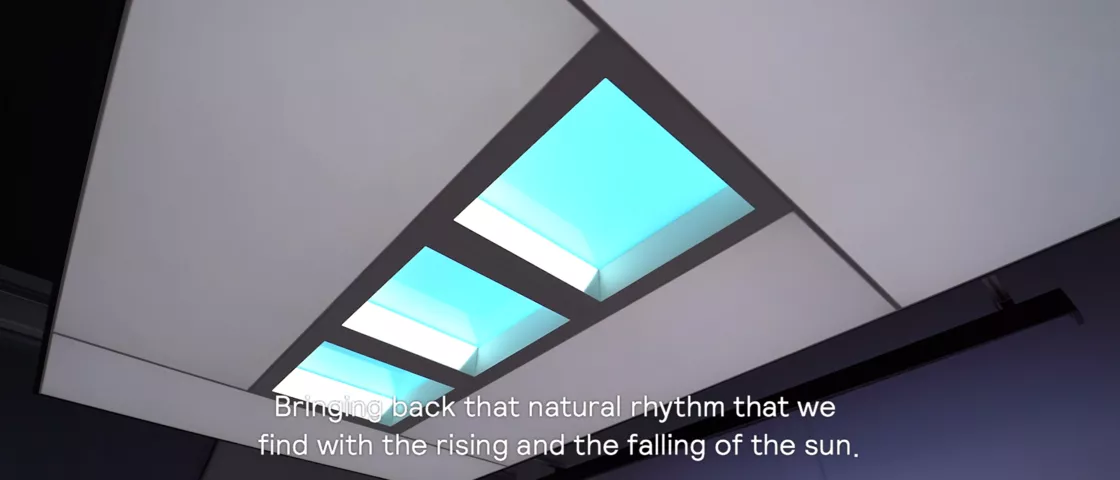
(Screenshot of Nature Connect product introduction) From my personal experience, neither Shanghai nor Amu's nature coverage is great. But the shorter one is the taller one, and Amu's offers a higher level of nature 'reachability'. There are several different city parks in Amu Darya: the east-west Westerpark, the north-south Rembrantpark, the Vondelpark in the city center, the Amstelpark in the south (all of Amu Darya's parks are free), and various other parks, large and small, scattered throughout the city. People may walk past these parks on their way to and from work, they may meet their friends in a park instead of a shopping centre, or they may go there to lie on the lawn and spend the afternoon in the sun. People's lives and these parks are integrated.
In addition, in Dutch cities there are also more 'complex' nature such as community gardens (public or private land where the owner can grow herbs, fruits, vegetables, etc.), children farms (small farms in cities where animals such as sheep, pigs, rabbits, horses, etc. live and children can go petting) and so on.
If you can't choose the city you live in, at least give yourself more access to nature!

(some park near the city)
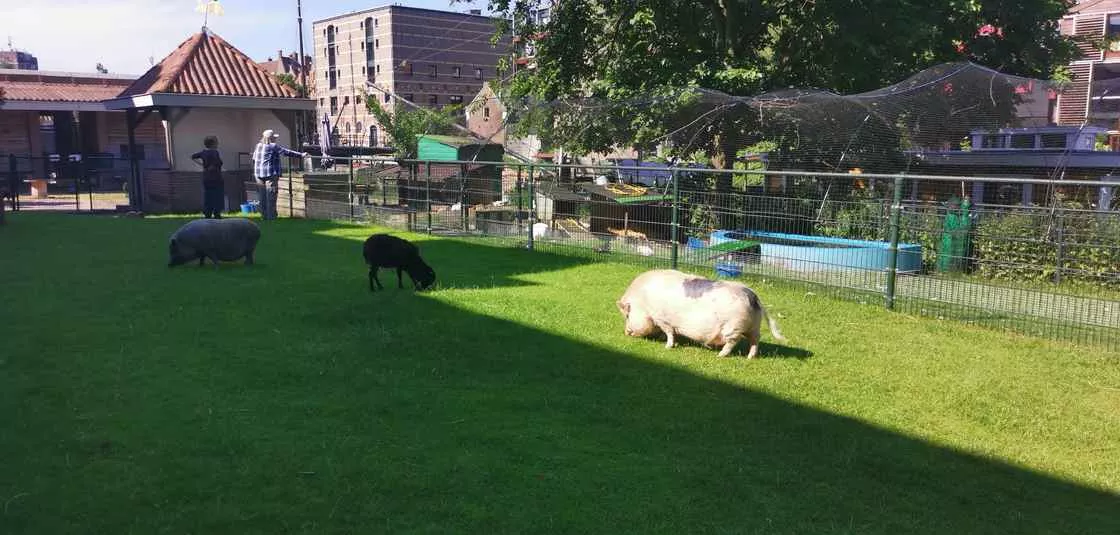
(children farm) being cultured in the city
A big reason for choosing to live in a city must be the spiritual fulfillment that the city can bring to people. In addition to more job opportunities, cities with high population density often offer a wide variety of cultural activities and venues. After all, where there are more people, there will be people who 'get things done'.
On that level, Shanghai is undoubtedly excellent. When I first came to Shanghai four or five years ago, I used to attend free events, especially language exchange events. At that time I used to attend an English exchange event in a KTV near People's Square, which was free of charge, but every time before we started chatting, someone would preach, and half of the participants were actually church members, but I just used it as listening practice; there was also a Chinese, Japanese and Korean exchange event. For 30 RMB for tea, you can chat with other people in the cafe, Koreans and Japanese for sure, but more Chinese, and occasionally you can develop a long term friend or two. To my surprise, this event is still going on all the time.
Then I started working and had a little bit of money, so I wanted to take Spanish and guitar lessons and found a good Spanish training school near my home, and I could also find a very good guitar studio.
The year before I left Shanghai, I got hooked on listening to Live, with two Live shows scheduled for one Mid-Autumn Festival at the peak, and I was a regular at Live venues like Modern Sky. More noteworthy is the density of cafes in Shanghai, especially in Puxi. Of course coffee shops are not just places to drink coffee, but also places to study, work, see friends, or just spend time away from home. The presence of a rich third space is one of the most charming things about Shanghai.
Amsterdam is also excellent in this respect, but it's different from Shanghai's. Since I came to Amsterdam during the epidemic and have only just been fully liberalized until now, I haven't had a chance to fully experience the cultural life in Amu Darya, but from what I've felt so far, the cultural activities in Amu Darya are more focused on the use of space. As mentioned above, there are many large parks in Amu that are integrated with the city, and the interior of these parks is very functional. Besides walking through the different landscapes with friends, there are also large lawns to lie on and read, picnic, drink and prostest, as well as restaurants and even museums. If in Shanghai friends gatherings are centered around shopping malls, in Amu it is more centered around parks. The canal neighborhood is also a kind of third space, whether it's boating on the canal, eating and drinking at a canal-side restaurant, or just walking along the canal for hours, it's a great social activity. Or maybe it's the variety of second-hand bookshops, cafes and libraries. Last year's King's Day (the birthday of the King of the Netherlands) was during the epidemic, but the streets near where I lived at the time were so full of people partying in orange clothes and headdresses that I hadn't seen so many people in a long time and I had some palpitations.
As for theatre, concerts and DJ events I haven't had a good chance to attend yet. But in general, the cultural life in Amuem makes good use of the various spaces in the city and is able to exploit the potential of the limited space as much as possible.
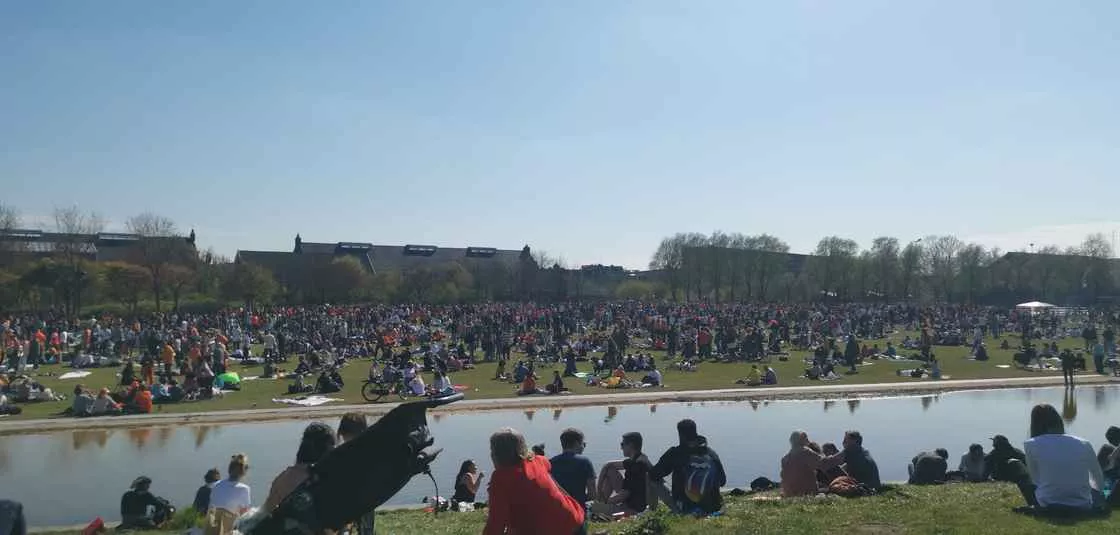
(Westerpark during last year's King's Day)
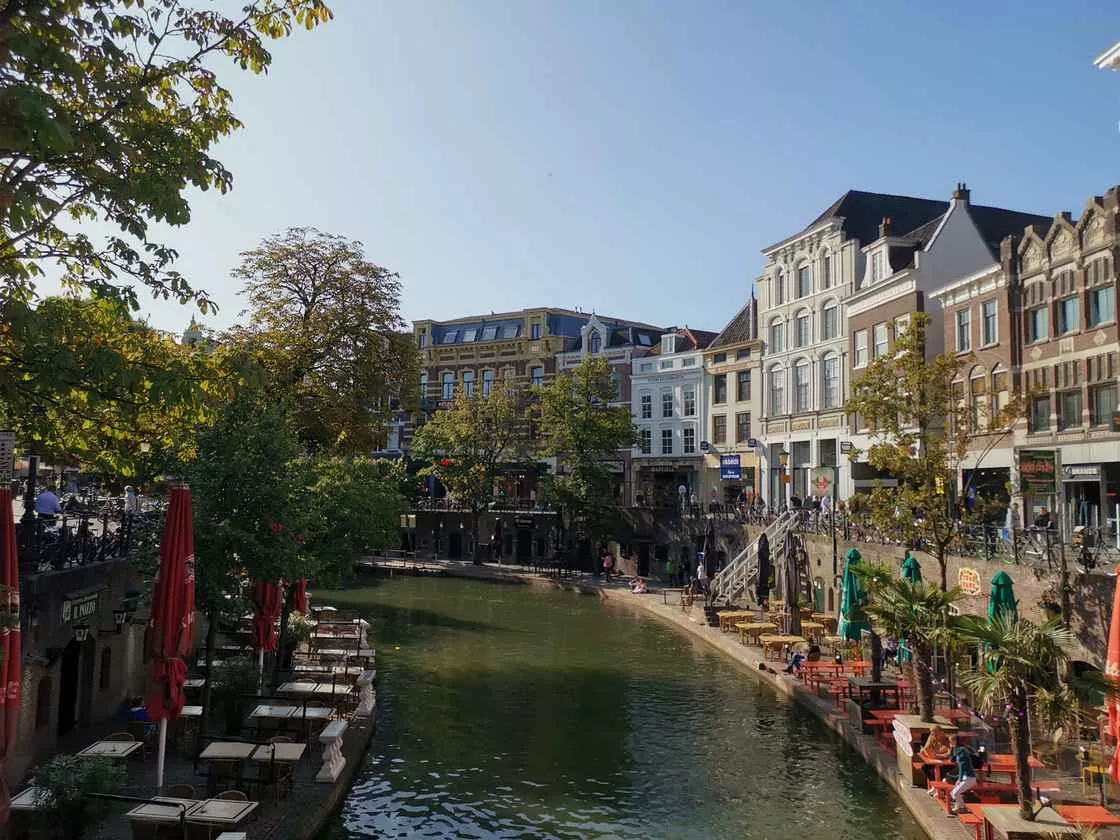
(restaurant by the canal) Anonymity, or a sense of control over self-identity
Autonomy (autonomy) is one of the sources of human well-being - did I make this choice based on my own will to choose? Did I really want to do this, or was it a choice I made due to outside pressure?
And what makes cities happy comes from the anonymity they bring, giving us more autonomy to choose.
The large population in the city makes the chances of meeting someone we know not very high. And the strangers we meet on the road don't really care too much about themselves, because everyone has their own focus in life. Such 'anonymity', while it has its corresponding problems, gives, more than anything else, a sense of control over each person's self-identity - each person can present a different self in different situations. But at the same time, we can still feel connected to people - whether with strangers, or with friends and acquaintances.
Anonymity is something that I can fully appreciate in both Shanghai and Amsterdam. Shanghai, needless to say, is a huge city where the chances of meeting someone you know are slim, and because the city is large and populous enough, and the people living in it are diverse enough, it's not a strange thing to 'stand out'.
But the anonymity I experienced in Amsterdam was more about the sense of irrelevance I experienced as an 'outsider' than the perks that come with having a large population. I was a stranger to their lives - was it normal to lie on a bike and ride it? Is it normal to sleep on the lawn? Is it normal to walk around the city with a hiking pack on your back? Is it normal for middle schoolers to curl their hair? Further, is normal a 'quality' that they value or not? "Is 'abnormal' a 'normal'?
At the same time, the traits that I display, my behavior, they don't know if it's normal or not. The unknown to each other also gave me great room to 'play' - I am special here, it doesn't matter if anything I do is normal or out of the ordinary, I am happy. In this way, I did get a taste of 'living elsewhere' as well.
Closing Words
So, what kind of city makes us happy? A city built with people in mind, a city where we can commute in a shorter time and in more ways, a city with nature that is integrated with city life, a city that connects people in various ways, but also a city that allows us to choose our own identity.
But city life is by no means perfect, and when we choose to live in cities, we gain something, but we also lose a lot.

Cities are not all the possibilities of life; villages, towns, snowy mountains, grasslands, deserts, seas, the possibilities are everywhere. But no matter where we live, the most important thing is - we know how to make our lives happier.